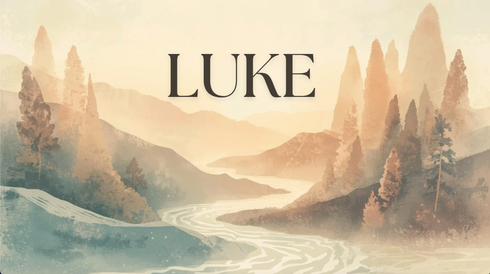
Mark 16: The Story Continues
In our final exploration of Mark's Gospel, we've reached one of the most controversial chapters in the entire New Testament: Mark 16. This chapter, particularly its ending, has sparked significant debate among Biblical scholars for centuries. What makes this final chapter so contentious isn't what it says, but rather where it ends in the earliest manuscripts we possess.
According to the oldest and most reliable manuscripts, Mark's Gospel concludes rather abruptly at verse 8, with the women fleeing from Jesus' empty tomb "trembling and bewildered, saying nothing to anyone because they were too frightened." This unexpected ending has left many readers throughout history feeling that something must be missing. After all, other gospels include post-resurrection appearances of Jesus and more definitive conclusions. However, this seemingly incomplete ending actually aligns perfectly with Mark's unique storytelling approach throughout his Gospel.
The manuscript history reveals fascinating insights into how we received our modern Bibles. Early translators worked with limited manuscripts, and as older copies were discovered, scholars noticed significant differences. The oldest manuscripts ended at Mark 16:8, many early church fathers quoted only up to this verse in their commentaries, and linguistic analysis shows a distinct style shift after verse 8. What likely happened is that commentary notes written in the margins of some manuscripts gradually found their way into the main text over centuries of hand-copying. This explains why some older translations include additional verses while most modern translations place these verses in brackets or footnotes.
What's particularly remarkable is that this shorter ending doesn't alter any Christian doctrine. The resurrection is firmly established in multiple gospel accounts and throughout the New Testament. But more importantly, Mark's abrupt ending serves his narrative purpose brilliantly. Throughout his Gospel, Mark consistently presents evidence about Jesus and then challenges readers to decide what they will do with this information. The empty tomb becomes the ultimate evidence, and the abrupt ending forces readers to confront the same question that has echoed throughout the entire book: What will you do with Jesus?
This rhetorical strategy makes Mark's Gospel incredibly relevant to contemporary readers. When we finish reading, we aren't just passive observers of a historical account that ties everything up neatly. Instead, we're confronted with the reality of the resurrection and must decide how we will respond. Will we, like the women at first, remain silent out of fear? Or will we recognize the significance of the empty tomb and proclaim the risen Christ? The story continues not just in the other gospels or in Acts, but in our own lives as we decide how to respond to Jesus.
This journey through Mark represents a significant milestone for many Bible Breakdown podcast listeners who have been systematically reading through Scripture together. Having completed the entire New Testament, Pastor Brandon reminds us that the only thing better than reading through the Bible is reading it again, as each subsequent reading reveals new connections and insights. The Bible isn't a book we read once and shelve – it's a living text that continues to speak to us differently as we grow and mature in our understanding.
Let’s read it together.
#biblebreakdown
Get this text to you daily by texting "rlcBible" to 94000.
The More we Dig, The More We Find.




